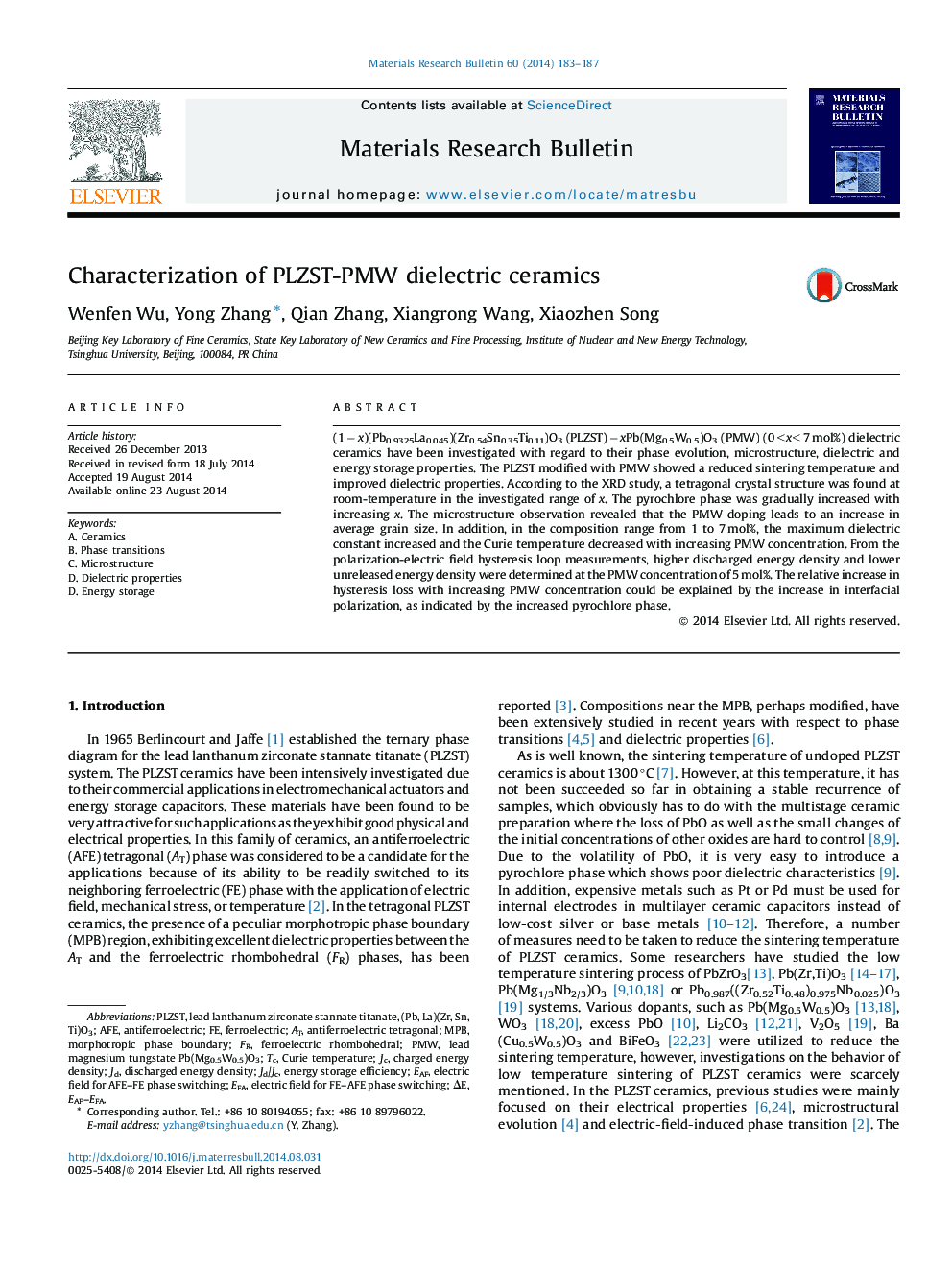| Article ID | Journal | Published Year | Pages | File Type |
|---|---|---|---|---|
| 1487828 | Materials Research Bulletin | 2014 | 5 Pages |
•PLZST-PMW ceramics with excellent performances can be sintered at 1150 °C.•The average grain size was increased with increasing PMW concentration.•PMW additions increase maximum dielectric constant and decrease Curie temperature.•Higher discharged energy density and lower unreleased energy density were obtained.•The increase in hysteresis loss with increasing PMW concentration was explained.
(1 − x)(Pb0.9325La0.045)(Zr0.54Sn0.35Ti0.11)O3 (PLZST) − xPb(Mg0.5W0.5)O3 (PMW) (0 ≤x≤ 7 mol%) dielectric ceramics have been investigated with regard to their phase evolution, microstructure, dielectric and energy storage properties. The PLZST modified with PMW showed a reduced sintering temperature and improved dielectric properties. According to the XRD study, a tetragonal crystal structure was found at room-temperature in the investigated range of x. The pyrochlore phase was gradually increased with increasing x. The microstructure observation revealed that the PMW doping leads to an increase in average grain size. In addition, in the composition range from 1 to 7 mol%, the maximum dielectric constant increased and the Curie temperature decreased with increasing PMW concentration. From the polarization-electric field hysteresis loop measurements, higher discharged energy density and lower unreleased energy density were determined at the PMW concentration of 5 mol%. The relative increase in hysteresis loss with increasing PMW concentration could be explained by the increase in interfacial polarization, as indicated by the increased pyrochlore phase.
Graphical abstractFigure optionsDownload full-size imageDownload as PowerPoint slide
